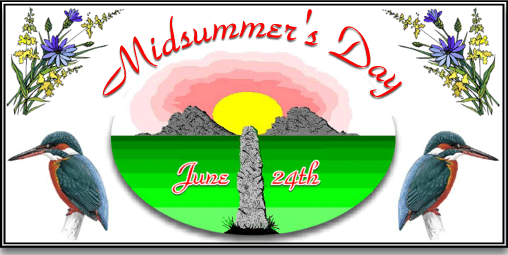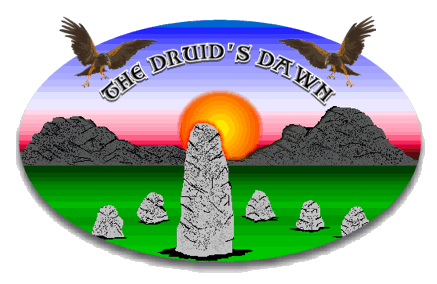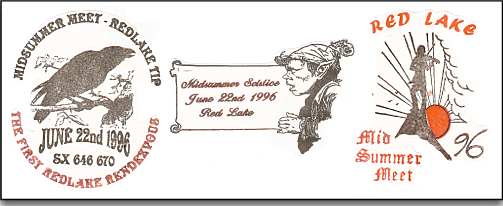
If the astro-archaeologists are to be believed then man has been celebrating Midsummer’s Day on Dartmoor for around 4,000 years. It was also the time of the Summer Solstice which in simple terms is when the earth is at a stage of its orbit where the northern hemisphere is most tilted towards the sun. This causes the sun to appear at 23.45º above the celestial equator which in the year is its highest path across the sky. The result of this phenomenon is that the day of the Summer Solstice is the day of the year with the longest daylight period and also the shortest night. Today there is a certain amount of confusion because originally both Midsummer’s Day and the Summer Solstice or longest day fell on the 24th of June. However, as the centuries have passed the longest day is now either the 20th or 21st of June, this discrepancy is said to have been caused by the variants of the Julian Calendar and the Tropical Year further confused by the Gregorian Calendar. This means that although we still celebrate Midsummer’s Day on the 24th of June the actual Summer Solstice takes place on the 20th or 21st of June, this (2006) year falling on the 21st.
Back in the so-called dark days of the Pagans the Summer Solstice was known as Litha and the celebrations actually started on midsummer’s eve. It was believed that on this night evil spirits roamed the earth as the sun began its decline into winter, accordingly fires were lit to ward off any such entities. At this time of year it was also believed that many plants had super healing powers and so were gathered in abundance. Then along came the Roman Catholics who promptly adopted the 24th of June as a celebration of the birth of John the Baptist. It was classed as a ‘Solemnity’ which is the highest form of liturgical feast possible and it even took place if the day fell on the Sabbath which is a rarity.

© Tim Sandles 2006
The biggest and most famous celebration of the Summer Solstice is held at Stonehenge where the Druids assemble to celebrate the sun rise. On Dartmoor there were very few customs directly related to celebrations. Hemery briefly mentions that there was an old custom where wagon wheels were rolled down the hill below Mil tor (Mel tor on the OS Map) on Midsummer’s Day. The idea was that the wheels should reach the river Dart which flows 600ft below the tor. Apparently it was possible to still find many of the wheels decaying in Miltor Wood, the practice was last observed in the 1950’s and has since long vanished.
There were however plenty of beliefs that midsummer’s eve was a change to see into the future or both good and bad. Anyone would waited in a church porch at midnight on Midsummer’s Eve would see the souls of the a parishioners enter the church, those that failed to come out would die during the coming year. If the watcher fell asleep during this macabre procession then they too would die before the year was up. Mrs Bray talks of two brothers from Tavistock who peeped through the keyhole of the local church at midnight on Midsummer’s Eve and too their horror saw themselves, both men dies shortly after. A young man from Bridestowe similarly saw the procession go in but didn’t see himself come out, he too died from a minor illness at harvest time.
On Midsummer’s Eve young girls would write each letter of the alphabet on a scrap of paper and put them face down in a bowl of water. A pair of shoes would them be arranged in a ‘T’ shape on the floor infront of the bowl, the girl would then recite:
“I place my shoes like the letter T,
In hopes my true love I shall see,
In his apparel and his array,
As he is now and every day.”
This would be repeated three times and on each occasion the shoes would be moved, in the morning some of the letters would be found facing upwards and these were the initials of the future husband.
In a similar vane, a girl would pick a rose on Midsummer’s Day and carefully store it away until Christmas Day. She would then wear the rose to church and her future lover would come up and take it from her.
It was not just the girls that used Midsummer’s Eve to tell their future because if a man was curious as to his prospects he would be led blindfolded into a room. The first thing he touched was said to point to his fate, if it was a basin of water it meant he would be in danger of drowning or a ring would mean he would be married, etc, etc.
St. John’s Wort was thought to be named after the saint as it flowered on Midsummer’s Day or the Feast of St. John, its red sap was said to represent his blood. It was considered lucky to pick the leaves and flowers of then plant on the 24th of June when they should be placed in a window to dry. The dried St. John’s Wort was then thought to protect against evil spirits, fire, and thunderbolts. It could also be worn around the neck as a love charm or to protect against mental illness.
One more recent tradition that ran for a few years in the mid 1990’s was a letterbox meet at Redlake Tip. Here special Midsummer’s stamps were made and sited around the tip and then the boxers gathered to swap stamps and tales.

Letterbox stamps from the first Redlake Rendezvous
This rendezvous was held on the longest day as opposed to Midsummer’s Day but as the actual day moved into the week the tradition died due to work commitments.
It was briefly mentioned above that prehistoric man used to celebrate the Summer Solstice and if you speak to the astroarchaeologists they will tell you that this is evident from the many stones circles and standing stones that have various alignments with the sun rise on this day. I must admit I have always been a bit sceptical about Neolithic alignments but a recent book called ‘Dartmoor Sun’ has changed my opinion. The author, Jack Walker has taken three of the Neolithic features on Dartmoor and visited them at various solstices. The work he did at the stone circle and row on Hingston Hill is pretty convincing as he shows a photograph of the stones in the row casting their shadows on each other in perfect alignment on the day of the Summer Solstice. The last stone which he calls the gnomon then casts its shadow through the stone circle like a sun dial, the shadow eventually pointing to what was the central grave at 6.45am, by 10.00am it has left the stone circle. Similar occurrences have been noted at Drizzlecombe and Merrivale for various solstices and equinoxes.
 Legendary Dartmoor The many aspects past and present of Dartmoor
Legendary Dartmoor The many aspects past and present of Dartmoor
